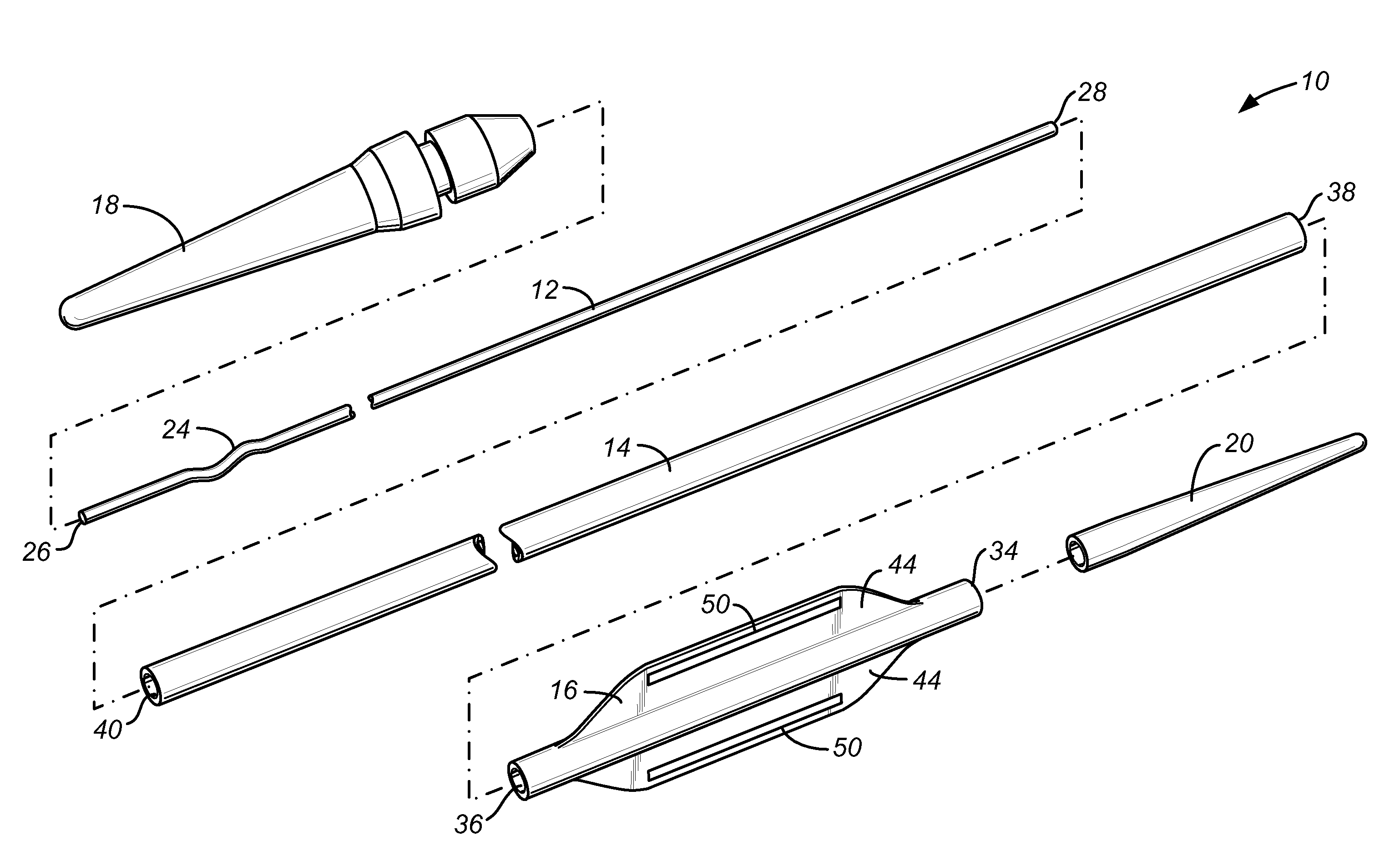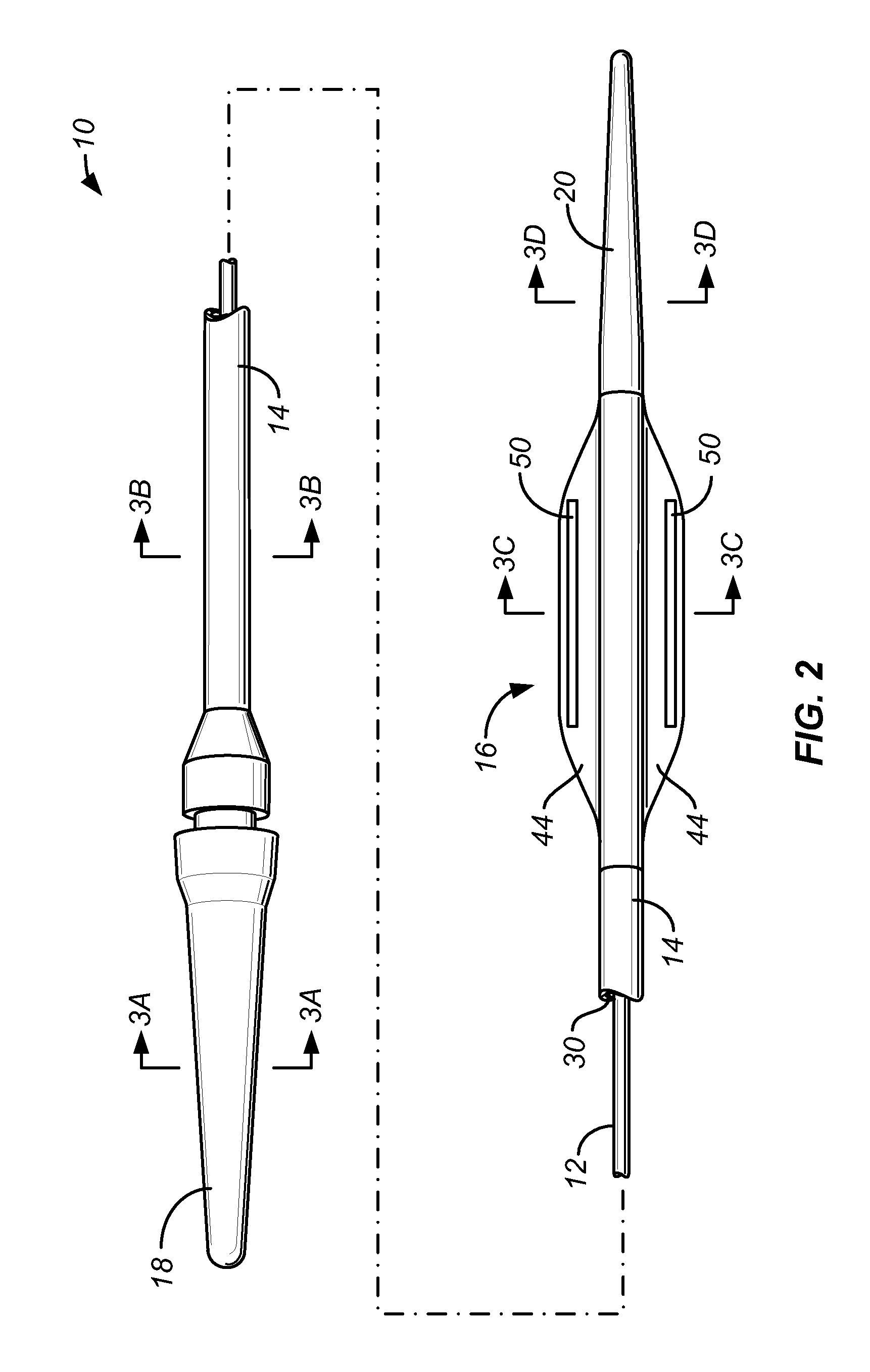Apparatus for occluding body lumens
a technology for occluding body lumens and apparatuses, applied in the field of medical equipment, can solve the problems of film collapse or fold in a different manner, and achieve the effect of preventing accidental deployment of tension members and facilitating manual deploymen
- Summary
- Abstract
- Description
- Claims
- Application Information
AI Technical Summary
Benefits of technology
Problems solved by technology
Method used
Image
Examples
Embodiment Construction
[0024]As illustrated in FIGS. 1, 2, and 3A-3D, an exemplary luminal occlusion device 10 constructed in accordance with the principles of the present invention, comprises a tension member 12, an elongate shaft 14, a flat film 16, a handle 18, and a distal tip 20. The tension member 12 comprises a solid core wire, typically composed of stainless steel or nickel-titanium alloy, having a length in the range set forth above. A serpentine detent 24 is formed near a proximal end 26 thereof. The distal end 28 of the tension member will pass through a lumen 30 of the elongate shaft 14, as best seen in FIGS. 2 and 3B. The distal end 28 is connected to a distal end 34 of the flat film 16, while a distal end 38 of the elongate shaft 14 is connected to a proximal end 36 of the flat film. The distal portion of the tension member 12 passes through an axial receptacle 42 of the flat film 16, as best seen in FIG. 3C, and proximal retraction of the tension member 12 relative to elongate shaft 14 will...
PUM
 Login to View More
Login to View More Abstract
Description
Claims
Application Information
 Login to View More
Login to View More - R&D
- Intellectual Property
- Life Sciences
- Materials
- Tech Scout
- Unparalleled Data Quality
- Higher Quality Content
- 60% Fewer Hallucinations
Browse by: Latest US Patents, China's latest patents, Technical Efficacy Thesaurus, Application Domain, Technology Topic, Popular Technical Reports.
© 2025 PatSnap. All rights reserved.Legal|Privacy policy|Modern Slavery Act Transparency Statement|Sitemap|About US| Contact US: help@patsnap.com



